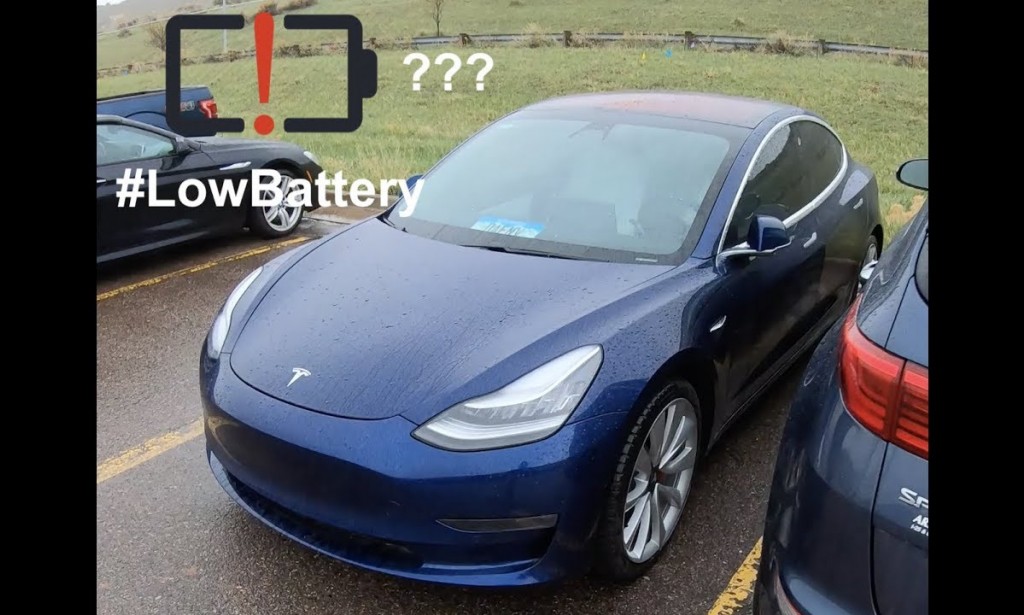Everyone agrees that Teslas are the future of motor vehicles, but it's rare to hear discussions on the challenges faced by those who own these revolutionary EVs. One lingering question for most wannabe buyers is whether owning a Tesla without a home charger is viable. Read on to find out how to get around this problem.
People who live in areas where the EV infrastructure is reliable will assume that it’s the same in other places. The same person with such a view is usually surprised when they venture abroad or out of town to places where there are no home chargers available.
Before Buying a Tesla
Anyone who wants to own a Tesla usually does thorough research beforehand. This helps you identify which model is a perfect fit for your life, whether it's a Model X or a Model 3. A significant number of EV owners will confess that they went to buy one after a friend or relative did the same. In such cases, anyone is easily sold on getting one the moment they alight from a test drive.
People fall in love with a Tesla vehicle because of the experience, and you have to personally be driven in one or get behind the wheel to understand what the fuss is all about. Of course, before placing an order, there is a checklist to consider.
Two Factors to Consider Before Purchasing a Tesla
Price
The first consideration is price because not many people can afford to own a Tesla. Looking at the 2021 versions, the cheapest is the 2021 Model 3, which starts at $39k, 2021 Model Y at $43k, the Model S follows at $81k, and the most expensive starting at $91k is the 2021 Model X. The 2021 Roadster starts from $200k while the 2021 Cybertruck costs about 100 dollars less than $40k.
In comparison, the most expensive EVs in the cheap category is the 2020 Chevy Bolt EV that costs $37k, followed by a Hyundai Ioniq Electric at $34k. In the luxury class where Tesla comes in, it seems that Tesla offers the cheapest offers because the 2019 BMW i3 costs some $45k, and the 2020 Jaguar I Pace starts at $70k. It is possible to get a discount from these automakers, but the fact remains that those prices are way beyond a majority of average income earners.
Speaking of price, it is estimated that a full charge will cost you $15.30, and that is an average mileage of 348 miles for the performance model. This price per full charge assumes that 1 kWh costs about 13 cents on average.
Charging
The next consideration is battery life, and this relies heavily on the charging aspect. The Model S Long Range Plus can do 400 miles or 640 kilometers. You will need about 7 hours of charging time to enjoy that range of mileage for the same EV. This means an overnight charging schedule is convenient, but what happens when one does not have a home charger?
Well, for starters, Tesla has installed superchargers in urban centers around America and especially in California, where there are more high-speed chargers per square mile than other regions of the country. However, these supercharging stations may not be as reliable as home charging, but when you find yourself owning a Tesla without a home charger, it's time to get creative.
Why People Still Purchase Teslas Before Installing a Home Charger
When you ask petrol heads for advice, they will think it’s borderline insane that you’re buying an electric vehicle without first installing the supporting infrastructure at home. This gives popularity to the misconception that Teslas are for individuals who own garages and live within the Tesla ecosystem where there are public EV charging stations.
Yes, people go ahead with the purchase because they are sure of the available alternative places to charge their EV, and in most cases, it works out well. Others anticipate that by the time the order is processed, they will have made the appropriate changes. These changes may include moving to a convenient neighborhood or city, but what if you don't have the luxury to change apartments?
Tips for Owning a Tesla Without a Home Charger
Make Plans
You will have to make a charging schedule for your Tesla. In order to do so, first identify places where you can charge the EV without affecting your daily life routines. It does not make sense to drive several miles to charge then drive back to your EV charger-less apartment.
Your EV charging schedule should be close to your workplace and close to where you live. It is also essential for you to know the exact mileage per charge with your driving habits in mind. Having this information will prevent any surprises because you will know the right time and day to do a full charge, and therefore the battery won't die on you in the middle of traffic.
Therefore, plan ahead after studying the EV but remember that the car should not interrupt your life; it should make it easier. Plugshare is an app you can use to come up with a personalized EV charging schedule.
The Best Time to Charge
Lately, there has been a shortage of charging spots because they are always occupied. One way to get around this is to identify the times when a particular station is empty. To do this, you can use applications like Plugshare, but observation can be helpful. City dwellers will tend to charge during the night or when they are off work, which means you can charge your Tesla during the day. This method is only effective when you know a particular EV supercharging station located away from a business area with lots of EVs.
EV Carpool
In case you have a friend who owns a home wall connector, ask them whether you could take turns charging one EV at a time. As one EV charges at home, the other is used to carpool the two of you to work. Again, this will favor individuals who work and live on the same route so that it doesn’t become inconvenient for either party.
Ask for EV Charging Facilities to Be Provided
It does not hurt to ask your landlord to provide a wall connector connection point. They might charge you a few dollars, but it would be worth it in the long term. The same can apply at a workplace; ask whether management is able to place EV charging stations in the parking lot and wall connectors for indoor parking.
It is possible that you're not the only one going through the stress of not owning a home charger. So, suppose you band together with other Tesla owners in your position. Then it becomes easy to persuade city officials and even neighborhood managers into installing EV charging facilities in your apartment and along the street.
Multitask
This essentially means that you charge your EV when going shopping, on business meetings, and on other errands. Even on long trips, choose to charge your vehicle at the same time you rest. Doing so will significantly reduce the probability of human error when driving for long periods. For example, when you have business in the CBD, leave your car at a supercharging station and then get around on foot, bicycle or taxi.
Invest in Adapters
This will involve the purchase of Gen 2 NEMA Adapters, which cost less than $40. The advantage of possessing EV charging accessories is that you can charge from anywhere you are able to find an electrical output. This approach requires a high level of caution because there is a risk of frying electrical components that operate at a lower or higher electrical voltage. Always read the manuals before plugging anything in and note the voltage of all the components so as to prevent a fire.
Join the DIY EV Movement
Take up the challenge and build the home charger facility yourself. This task will require thorough research and what is possible to achieve. The first thing is to get the relevant authorities' permission because an apartment owner will sue you for tinkering with their building's electrical setup without their consent.
Once you have permission, get the correct supplies and don’t cut costs by buying cheap electric accessories. As much as following the advice of YouTube EV gurus is a good idea, it is wise to always consult a professional when you’re not sure. Another thing to note is that you should read the terms of the warranty because if you go DIY on your Tesla and something breaks, then it might end up being an expensive repair.
In Conclusion
A wall connector costs $500, but that's not the problem; the issue is that there is no place to connect it at home. The other options left to you are supercharger stations, EV charging at work, and other EV friendly facilities. Such places have their own problems like congestion, and so all you can do is be creative. Owning a Tesla without a home charger is very much viable for city driving, where one can even do full charging twice a week or less. Anyone running out of solutions and ideas should take up the course to push local governments into providing sufficient public EV charging stations that are effective and reliable.



You must be logged in to post a comment.